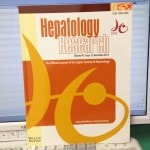Alcohol drinking patterns and the risk of fatty liver in Japanese men
千葉県 木更津市 肝臓専門医 早坂 章です。
アルコールと脂肪肝に関するとても興味深い論文です。
アルコールは脂肪肝の原因といわれているけれど、逆に程よい(moderate)飲酒は脂肪肝を予防するともいわれているので、調べてみたという論文です。
【結論】 飲酒は脂肪肝に予防的に働き、その効果は月に21日以上、飲酒すると効果的?とのことです。
詳細を読み直します。
Volume 46, Number 4, 519-528, DOI: 10.1007/s00535-010-0336-z
Yasunari Hiramine, Yasushi Imamura, Hirofumi Uto, Chihaya Koriyama, Masahisa Horiuchi, Makoto Oketani,Kaori Hosoyamada, Ken Kusano, Akio Ido and Hirohito Tsubouchi
Abstract
Background
Alcohol is considered to be a major cause of fatty liver (FL). In contrast, however, recent investigations have suggested that moderate alcohol consumption is protective against FL. To clarify the role of alcohol consumption in FL development, we examined the association between drinking patterns and FL prevalence.
Methods
We enrolled 9,886 male participants at regular medical health checks. Each subject’s history of alcohol consumption was determined by questionnaire. The subjects were classified according to alcohol consumption as non-, light, moderate, and heavy drinkers (0, <20, 20–59, and ≥60 g/day, respectively). FL was defined by ultrasonography. Independent predictors of FL were determined by logistic regression analysis.
Results
The prevalence of FL displayed a “U-shaped curve” across the categories of daily alcohol consumption (non-, 44.7%; light, 39.3%; moderate, 35.9%; heavy drinkers, 40.1%; P < 0.001). The prevalence of FL was associated positively with body mass index and other obesity-related diseases and inversely with alcohol consumption (light, odds ratio [OR] 0.71, 95% confidence interval [CI] 0.59–0.86; moderate, OR 0.55, CI 0.45–0.67; heavy, OR 0.44, CI 0.32–0.62) as determined by multivariate analysis after adjusting for potential confounding variables. In addition, examination of drinking patterns (frequency and volume) revealed that the prevalence of FL was inversely associated with the frequency of alcohol consumption (≥21 days/month) (OR 0.62, CI 0.53–0.71) but not with the volume of alcohol consumed.
Conclusions
Our observations suggest that alcohol consumption plays a protective role against FL in men, and consistent alcohol consumption may contribute to this favorable effect.
Keywords Fatty liver – Alcohol consumption – Nonalcoholic fatty liver disease – Metabolic syndrome



ディスカッション
コメント一覧
まだ、コメントがありません